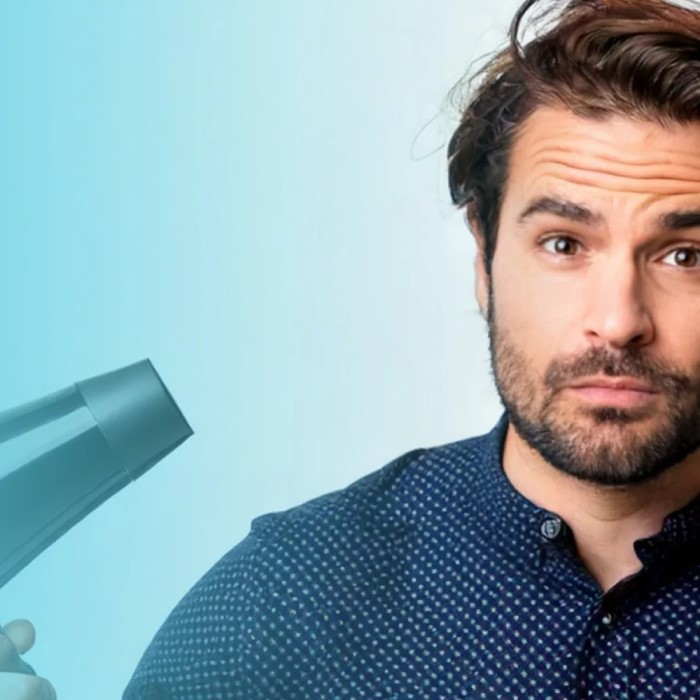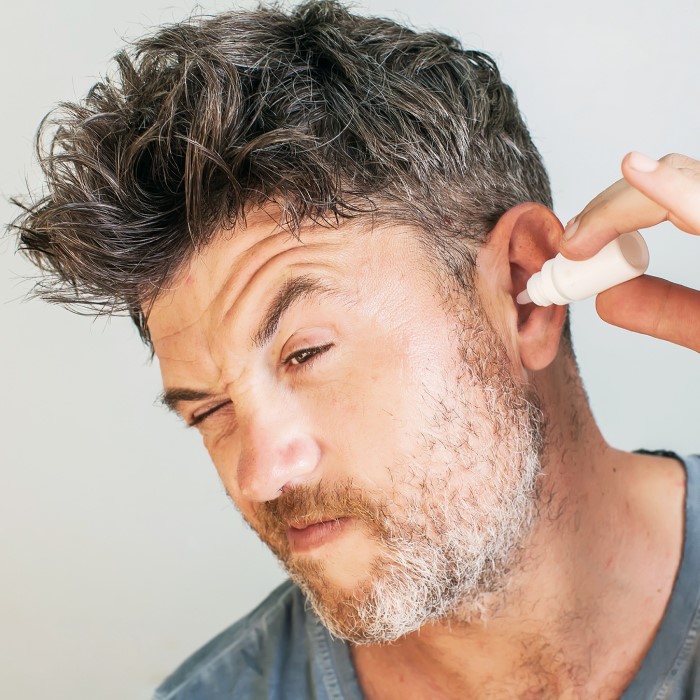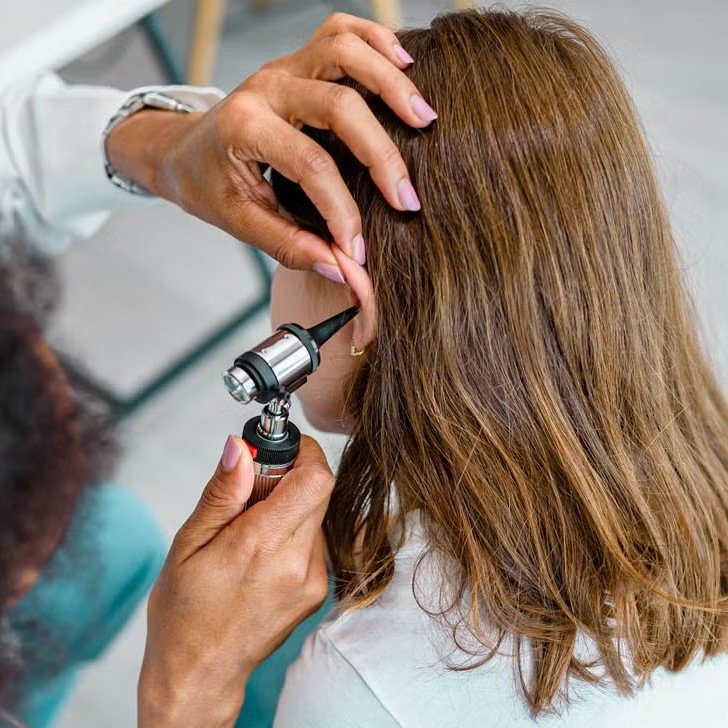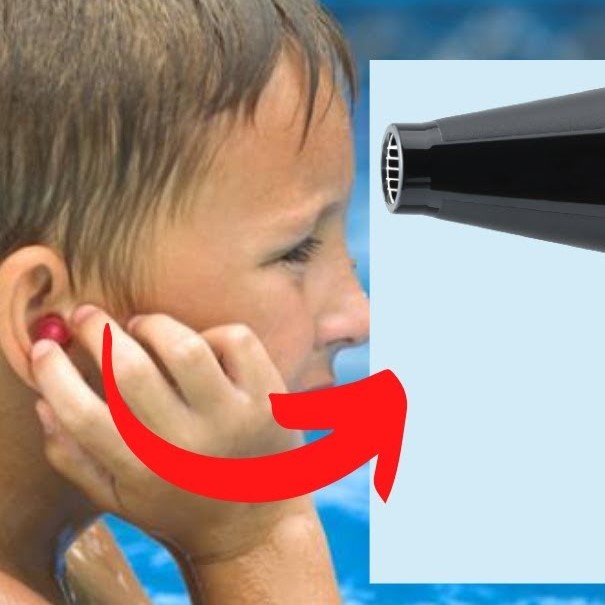Introduction
As many people rush to style their hair, the hair dryer has become a staple in daily routines. However, a lesser-known concern arises from improper hair dryer use: the risk of ear infections. While a hair dryer may seem harmless, improper usage can lead to health issues, particularly for your ears. In this article, we will explore the connections between hair dryer ear infection, identifying potential risks and providing effective prevention strategies to keep your ears healthy.

How Hair Dryers Work and Their Impact on the Ear
Hair dryers are common tools for quickly drying hair after a shower or swim. Although convenient, they can impact ear health if not used properly. Understanding how they function and their effects on the ear is crucial.
How Hair Dryers Produce Heat and Air Flow
Hair dryers use electrical energy to generate heat. A fan inside blows air over a heating coil. This combination creates warm air, which dries hair quickly. Most hair dryers also have adjustable heat and speed settings to suit different drying needs.
When the heat settings are too high, the airflow can reach temperatures over 140°F (60°C). Such extreme heat can influence not only hair but also the skin and ear canal nearby. The strong airflow can enter the outer ear and potentially disturb the delicate balance within.
Potential Effects of Noise and Heat on the Ear
Hair dryers are often loud, with noise levels ranging from 80 to 90 decibels on average. Extended exposure to such noise may cause discomfort or hearing problems over time. Additionally, the warm air can dry out the ear canal, which may lead to irritation or increase susceptibility to infections.
Similarly, overly hot air can damage sensitive ear tissue. It may also create an environment where bacteria and fungi thrive, especially if moisture is trapped in the ears. Regular use of high settings can escalate these risks significantly.
Using hair dryers responsibly is essential to minimize their impact. Paying attention to noise levels and heat settings helps protect both ears and overall health.
Common Causes of Ear Infections
Understanding the common causes of ear infections can help in prevention and early treatment. These infections often result from external or internal factors that affect the ear’s environment.

Bacterial and Fungal Infections in the Ear Canal
Bacterial and fungal growth in the ear canal is a common cause of ear infections. These infections, often termed otitis externa, occur when harmful microorganisms invade the ear. Warm, moist environments encourage bacteria and fungi such as Pseudomonas or Aspergillus to grow. Over-cleaning the ears or inserting foreign objects can also increase the risk. Removing earwax too frequently reduces natural protection, exposing the ear canal to infections.
Moisture Retention and Its Role in Ear Infections
Water trapped in the ears creates an ideal environment for bacterial and fungal growth. This often happens after swimming or showering, leading to what is commonly called “swimmer’s ear.” Moisture softens the ear canal’s skin, making it easier for bacteria or fungi to penetrate. Using ear plugs or drying ears thoroughly can reduce this risk, especially after exposure to water. Prolonged moisture in the ears can lead to irritation, inflammation, and infection.
Can Hair Dryers Increase the Risk of Ear Infections?
Using a hair dryer improperly can create conditions that increase the risk of ear infections. It’s important to understand specific risks related to warm air and incorrect usage to ensure safe practices.
The Link Between Warm Air and Bacterial Growth
Hair dryers release warm air, which can dry out the ear canal. This dryness may irritate the skin and disturb the natural balance of the ear. When ears are moist or recently wet, the warm air can trap residual water. Trapped water creates an ideal environment for bacteria or fungi to grow. These microorganisms thrive in warm, damp conditions, increasing the likelihood of infection. Overheating the ear canal with high-temperature settings can exacerbate this risk. Prolonged exposure to excessive warmth may also damage sensitive ear tissues.
Risks of Overuse or Incorrect Usage of Hair Dryers
Overusing hair dryers around the ear can lead to significant issues. Frequent hot air exposure can dry the skin excessively, causing cracks that allow bacteria entry. Holding the dryer too close to the ear canal amplifies these risks. It may force strong air pressure into the ear, potentially disturbing inner structures. Incorrect angling or long drying periods can also escalate the chances of irritation and infection. Using hair dryers without controlling the heat and airflow settings poses a long-term threat to ear health. Safe and mindful usage is essential to minimize these risks.
Proper Use of Hair Dryers to Avoid Ear Issues
Using hair dryers properly can help minimize the risk of ear problems. By regulating temperature and maintaining safe protocols, you can prevent harm to your ear health.
Setting the Correct Temperature and Distance
Choose a moderate temperature setting to avoid overheating your ear area. High heat can damage sensitive ear tissue and dry out the ear canal. Most hair dryers feature adjustable temperature settings, so keep it low to medium around your ears.
Maintain a safe distance between the hair dryer and your ear. Experts suggest keeping the dryer at least 8-10 inches away. This ensures air pressure is not too strong and reduces the risk of irritation to your ear canal.

Using short bursts rather than prolonged blowing near the ear is safer. Overexposure to warm air can trap moisture in your ears, promoting bacterial or fungal growth.
Recommendations for Safe Usage Around the Ears
Avoid pointing the hair dryer directly into the ear canal. Direct airflow can disturb inner structures. Opt for an angled approach, focusing on the hair rather than the ear opening.
After showering or swimming, use the dryer gently and briefly to dry the outer ear. Pat drying with a clean towel first can reduce moisture. Avoid using high-speed settings to further reduce risks.
Inspect the hair dryer regularly to ensure it is functioning well. Poor-quality dryers may emit unbalanced heat or airflow that could hurt your ears.
Following these precautions can protect your ears while helping you maintain a clean and dry environment. Responsible hair dryer usage is key to preventing ear infections and irritation.
Alternative Ways to Prevent Ear Infections
Preventing ear infections involves adopting simple and effective habits. Alternative methods can help reduce risks, especially concerning moisture or bacterial exposure.
Drying Your Ears Safely After Showering or Swimming
Drying your ears properly is essential to avoid trapped moisture. Use a clean towel to gently pat the outer ear dry after showering or swimming. Avoid inserting anything directly into the ear canal as it may cause irritation or push water further in.
Another effective method is tilting your head and pulling the earlobe to drain water. You can also use soft tissue to gently absorb excess moisture around your ear openings. Limit the use of hair dryers directly near the ear canal to prevent unnecessary heat exposure.
When water remains stuck in your ear, over-the-counter ear-drying drops can be helpful. These drops typically contain alcohol to quickly evaporate the moisture, minimizing bacterial growth risks. However, consult your doctor if there is persistent discomfort or pain.
Using Ear Plugs or Protectors to Avoid Moisture Build-up
Ear plugs are highly effective in preventing water from entering your ears during activities like swimming. Opt for waterproof ear plugs made specifically to block water while ensuring a comfortable fit.
For showering, protective ear covers or custom-fit silicone molds can shield your ears from water. These barriers prevent moisture build-up in the ear canal and lower the risk of infection.
Using ear plugs regularly during water-related activities creates a protective layer between your ears and bacteria-prone environments. Replace them frequently and clean reusable plugs after every use to maintain hygiene.
By safely drying your ears and using protective tools, you can significantly reduce the chances of developing ear infections. Simple precautions go a long way in maintaining ear health consistently.

Signs and Symptoms of an Ear Infection
Recognizing the signs of an ear infection early is essential for prompt treatment. Ear infections typically present with noticeable symptoms that affect your ear health and overall comfort. Identifying these symptoms can help prevent complications.
When to Seek Medical Advice
You should consult a doctor if symptoms worsen or persist beyond a few days. Severe ear pain is a significant indicator that medical attention is necessary. If you experience discharge, such as pus or fluid from your ear, seek help immediately. Persistent fever, especially in children, may also suggest an ear infection requiring treatment.
Difficulty hearing or persistent ear ringing (tinnitus) should not be ignored. If you notice swelling, redness, or severe discomfort in or around your ear, consult a specialist. Children may pull at their ears or cry excessively if they have an infection. Early intervention can prevent the condition from worsening.
Common Red Flags to Watch Out For
Be alert to common symptoms that signal a hair dryer ear infection. Intense throbbing or shooting pain in the ear is a primary red flag. Constant itching or irritation may also suggest an underlying infection. Fluid buildup in the middle or outer ear can cause a feeling of pressure or fullness.
Dizziness or balance issues could stem from an infection affecting your inner ear. If accompanied by nausea or vomiting, consult a doctor without delay. Headaches, combined with ear pain or pressure, indicate you might need medical attention.
Recurring infections or unusual signs that do not respond to over-the-counter remedies should be addressed promptly. Paying attention to warning signals helps ensure you get the proper care and avoid long-term issues.
Tips for Maintaining Ear Health
Caring for your ears is essential to prevent infections and maintain overall ear health. Simple habits can make a big difference.
Hygiene Practices to Prevent Infections
Keep the Ear Area Clean:
- Regularly clean the outer ear using a soft, damp cloth to maintain hygiene.
- Be gentle while wiping the outer ear to avoid any irritation or injury to the skin.
- Important: Never insert items like cotton swabs or sharp objects into the ear canal. This can push earwax deeper and potentially harm the sensitive structures of the ear.
Manage Earwax Effectively:
- Allow earwax to exit the ear naturally, as it serves protective functions and typically moves out on its own.
- If you notice a buildup or experience discomfort from excess earwax, seek advice from a healthcare professional for safe, hygienic removal methods.
Dry Your Ears After Water Exposure:
- After activities like swimming or showering, make it a habit to dry your ears thoroughly.
- Use a clean towel to gently pat down the outer ear to remove moisture.
- Tilt your head to help excess water drain from the ear canal.
- Refrain from using cotton swabs or other objects to try and absorb moisture, as this can push water further into the ear.
Avoid Sharing Personal Items:
- Sharing devices like earphones, earbuds, or hearing aids can lead to the transfer of bacteria and other germs.
- Always use your own, clean, and sanitized devices to minimize the risk of infections or other ear health issues.
Protect Your Ears in Dusty and Noisy Environments:
- In environments where there is excessive dust or loud noises, it’s essential to protect your ears.
- Consider using earplugs or earmuffs designed to block out noise, which can help prevent irritation and potential damage to your hearing.
- Taking these precautions can help maintain your ear health and prevent long-term issues associated with exposure to harmful environmental factors.
Regular Check-ups with an ENT Specialist
- Schedule Routine Exams: Visit an Ear, Nose, and Throat (ENT) specialist yearly, even without any symptoms. Regular check-ups help identify issues before they worsen.
- Monitor Ear Health with Chronic Conditions: If you have recurring ear infections or a history of ear problems, see a specialist more often.
- Address Warning Signs Promptly: Seek expert advice if you experience ear pain, hearing loss, or unusual discharge. Early treatment prevents complications.
- Discuss Hearing Aid and Device Care: For those using hearing aids, an ENT specialist can guide you on proper maintenance and hygiene protocols.
Following these tips can help keep your ears healthy and free from infections. Consistent care and professional guidance ensure long-term ear health.
Conclusion: Stay Safe While Enjoying Your Hair Dryer
In conclusion, while using a hair dryer can be a convenient way to dry your hair, it’s essential to remain vigilant about ear health to prevent potential infections. Understanding the risks associated with hair dryer ear infection will empower you to make informed choices and adopt safer drying practices. By following the preventative tips outlined, such as keeping a safe distance, adjusting settings, and recognizing symptoms, you can enjoy healthy, irritation-free hair drying experiences. Always prioritize your ear health—after all, enjoying beautiful hair should never come at the cost of your well-being!
